Clay Dragon Egg Easy Clay Dragon Egg
What would dragon eggs look like? As a fan of both Harry Potter and A Game of Thrones, I have been pondering this question for a while. Last Easter my son voiced the question as well, and over the course of a short family discussion, we decided that they must be encrusted with jewels and precious stones from dragon's treasury. Of course, next we needed to make dragon eggs, just in case a baby dragon might hatch out of one!
UPDATE: Also check our mermaid eggs – with a step-by-step video tutorial!

This post contains Amazon Affiliate links for your convenience.
We're very fond of dragons here. We've made dragon puppets, a dragon drawing prompt and colouring page, and now we decided to make… a dragon egg!
If you want to make dragon eggs, you'll need:
- aluminum foil
- air-dry clay (for art projects, my favourite air-dry clay is La Doll Premier; for quick crafts with kids, Crayola Air Dry clay is a good economical alternative)
- liquid watercolours/food colouring
- acrylic beads, jewels and stones; seashells, beach glass and rocks; anything else that might embellish a dragon's egg
Watch the Video
Later on, we made mermaid eggs, using the same technique, and that time I took a video of the process. Check this tutorial to find it!
How to Make Fantasy Eggs
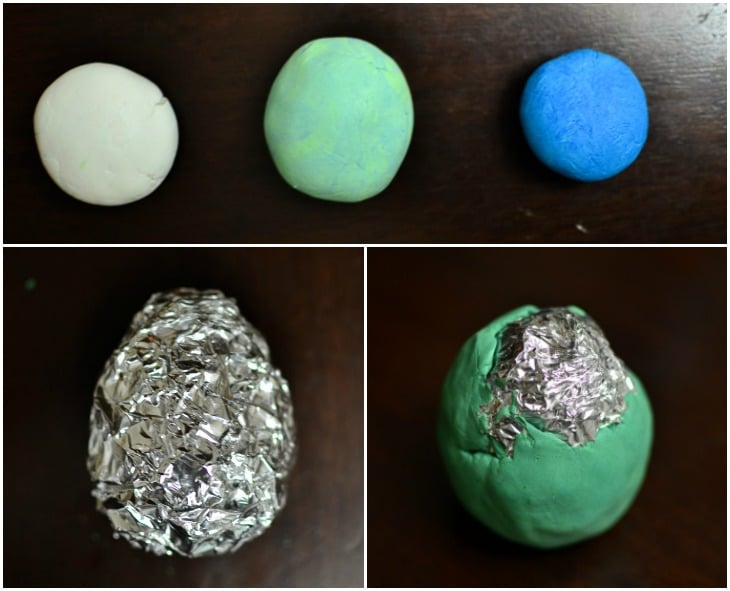
Step 1: Prepare Clay
You can buy coloured air-dry clay or you can get a big tub of white/natural clay and stain it with watercolours or food colouring. That's what we did. For a more even finish, mix a few drops of paint into the clay before starting to sculpt. On the picture above you can see how the clay looked before and after staining. However, you can also sculpt with whatever colour you've got and paint the surface once the clay is dry. We added more colour at that stage, too.
Step 2: Make the Base
Roll aluminum foil into an egg form to create a base. There are two reasons to start with the base: it saves clay, and, most importantly, it creates a solid core. Without one, it'll be difficult to keep the egg from shifting its form when you start pushing beads and stones into it. Also, if you want to make a surprise egg and let the receiver "hatch it" to find a miniature toy dragon or something similar inside, wrap the present into aluminum foil at this point.
Step 3: Cover the Base with Clay
Start building the clay layer. It needs to be at least 1/2″ deep, so that you have enough depth to push beads into the clay. Roll it into a circle, then wrap the aluminum egg in it. Cover the opening last.
Air-dry clay usually takes about 24 hours to dry, more or less depending on ambient humidity and how thick the layer is, so you don't need to hurry. But if you start feeling like it's getting too dry, you can add water to the surface. If you need to pause, put your work and any leftover clay into a zip-lock bag with a few drops of water. You can also use a brush with water for smoothing the surface when doing final touches.
Step 4: Insert the Beads, Jewels, Etc.
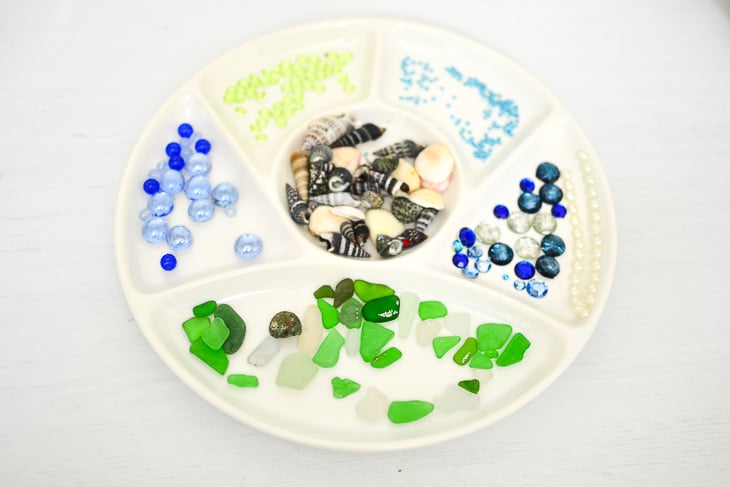
Collect beads, jewels, seashells and other pieces you're going to use for decorating. Besides acrylic beads, we used beach glass and seashells. After all, there can be different kind of fantasy creatures with eggs – a sea dragon or a mermaid. Strings of imitation pearls also worked well for our eggs.
If you push beads and seashells deep enough into clay, it will stick and stay until the clay dries up. My son was three when we made the eggs, and he didn't have a problem with jamming those stones right in.
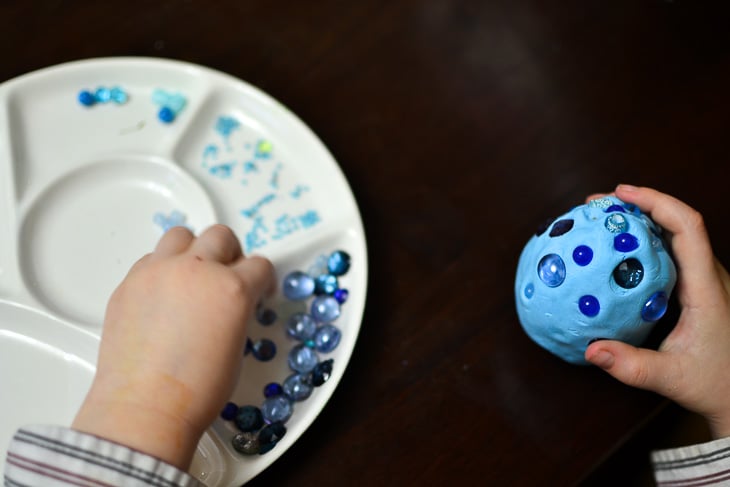
When it came to making eggs with seashells, some of them were too big to stick. No problem – we used them as stamps instead, and added some texture to the clay.
Step 5: Let the Eggs Dry.
Usually 24 hours is enough. If you forget yours for longer, it isn't a problem. They can be done at this point. This is how ours turned out.
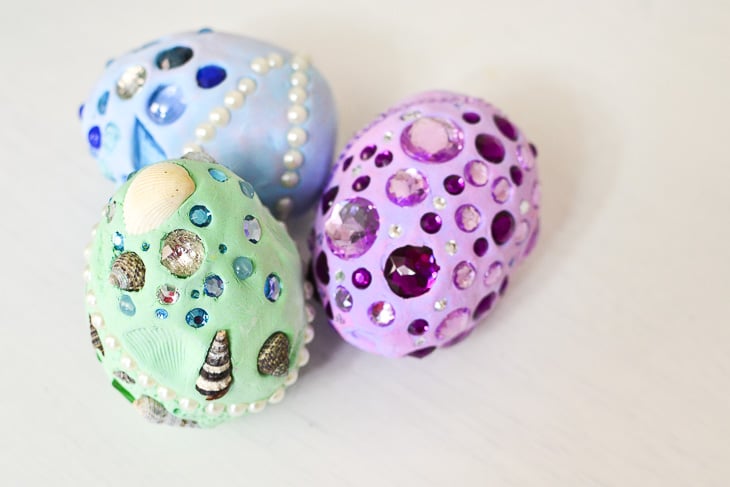
Step 6 (Optional): Accentuate Texture with More Paint
As I mentioned in the beginning, you can also work with clay as it came out of the bag and add colour in the end. We stained our clay, but wanted to add more texture with watercolours. We tried different brush strokes, but my favourite was the texture created by dabbing the clay surface with the tip of the brush to create a uneven polka-dot look.
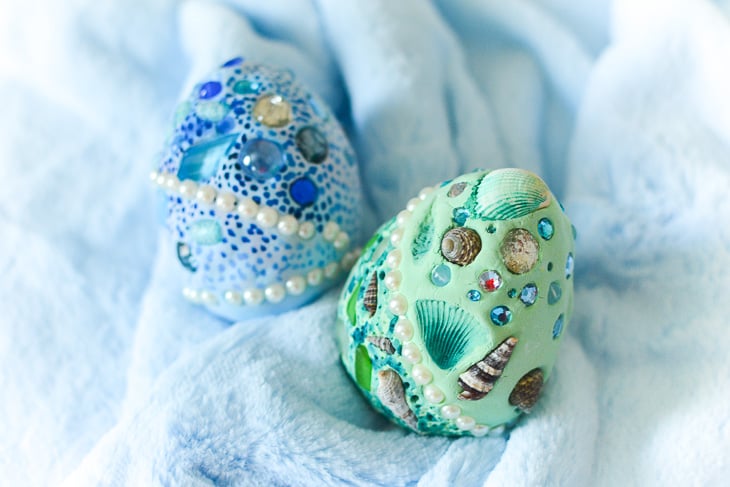
Not sure what chance we have at hatching a dragon, but we have done our best at creating convincing eggs!
Want a card with simple instructions for when you make the craft? You can print the one below!
Materials
- aluminum foil
- air-dry clay
- liquid watercolours or food colouring
- acrylic beads, jewels and stones; seashells, beach glass and rocks; anything else that might embellish a dragon's egg
Instructions
- (Optional) If you are using a coloured clay, skip to step 2. If you are using a white clay, you may want to stain it by mixing with liquid watercolours or food colouring.
- Roll aluminum foil into a ball/egg.
- Cover the aluminum ball with clay and sculpt it into an egg form.
- Decorate with beads, jewels, and seashells by pushing them into clay.
- Let the eggs dry for about 24 hours.
- (Optional) At this point, you can paint them again.
If you make dragon eggs, please, share your pictures with us on our Instagram or Facebook pages!
More dragons?
If you have a fondness for dragons, check our other dragon crafts!
Articulated Dragon Puppet
Dragon & Princess: free printable card, colouring page & art prompt
Dragon Clothespin Puppet

More Eggs?
I love painting eggs! We made these dragon eggs together with my son when he was three, so I recommend it as a very easy and kid-friendly craft. When he was two, we made space eggs. And Harry Potter eggs were simply one of my favourites. Plus, they go along well with the dragon theme.
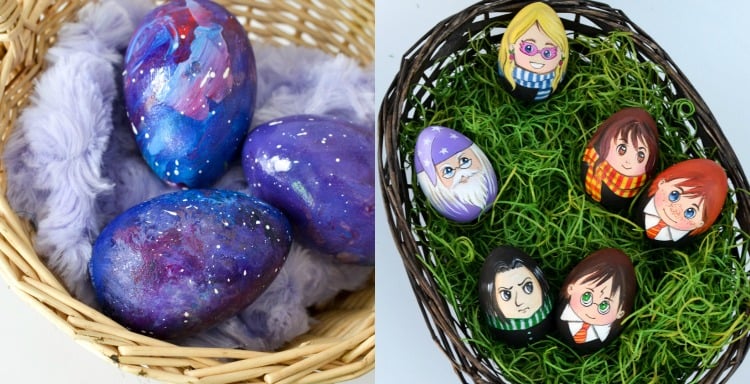
Thanks for reading and come again!
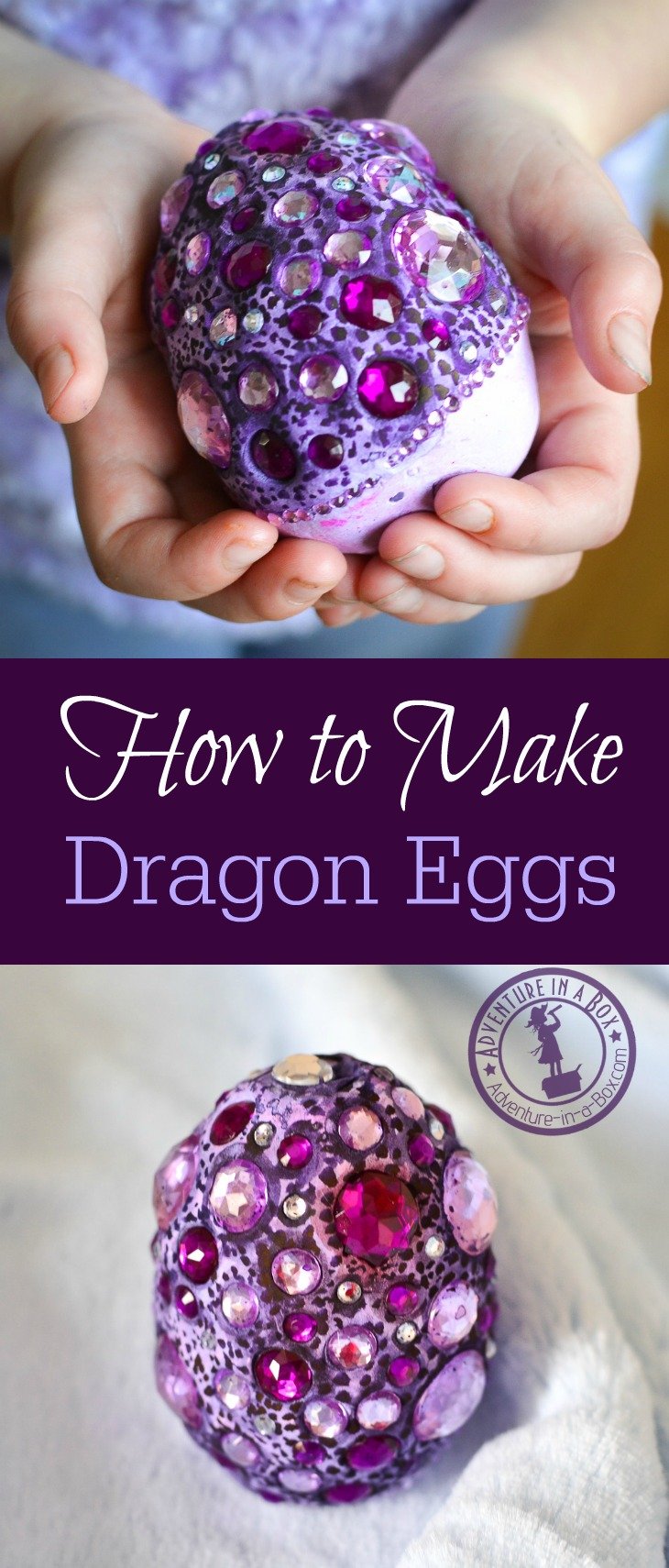
Source: https://www.adventure-in-a-box.com/how-to-make-fantasy-dragon-eggs/
0 Response to "Clay Dragon Egg Easy Clay Dragon Egg"
Post a Comment